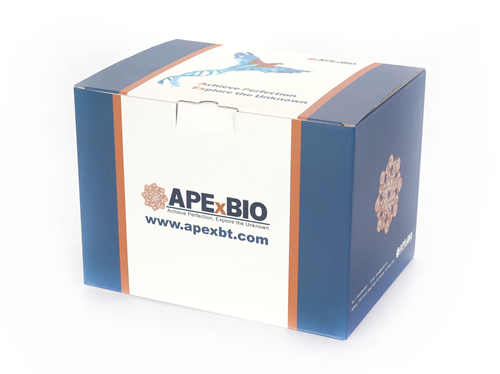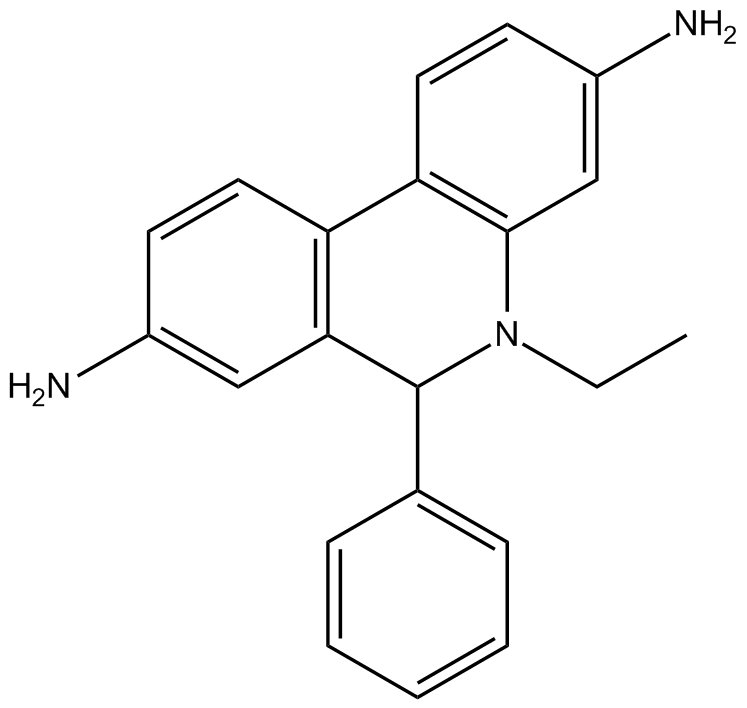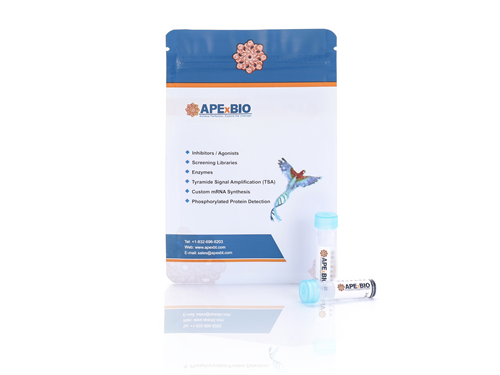Search results for: 'research area cell cycle rad51'
-
 BA3069 NSC745885Summary: NSC745885 is a potent antitumor agent that is selectively toxic to a wide range of cancer cell lines but not to normal cells.
BA3069 NSC745885Summary: NSC745885 is a potent antitumor agent that is selectively toxic to a wide range of cancer cell lines but not to normal cells. -
 C3807 DihydroethidiumSummary: Dihydroethidium (DHE), is a peroxide indicator. It penetrates cell membranes to form fluorescent protein complexes that fluoresce blue.
C3807 DihydroethidiumSummary: Dihydroethidium (DHE), is a peroxide indicator. It penetrates cell membranes to form fluorescent protein complexes that fluoresce blue. -
 BA3233 GermanicolSummary: Germanicol is a selective anti-tumor agent that inhibits the growth of human colon cancer cell lines HCT-116 and HT29.
BA3233 GermanicolSummary: Germanicol is a selective anti-tumor agent that inhibits the growth of human colon cancer cell lines HCT-116 and HT29. -
 BA3606 STO-609Summary: STO-609 is a selective and cell permeable inhibitor with values of 80 and 15 ng/mL for recombinant CaM-KKα and CaM-KKβ, respectively.
BA3606 STO-609Summary: STO-609 is a selective and cell permeable inhibitor with values of 80 and 15 ng/mL for recombinant CaM-KKα and CaM-KKβ, respectively. -
 BA3927 TretazicarSummary: Tretazicar (CB1954) is an antitumor precursor with high potency and selectivity against the Walker256 rat tumor cell line.
BA3927 TretazicarSummary: Tretazicar (CB1954) is an antitumor precursor with high potency and selectivity against the Walker256 rat tumor cell line. -
 K1011 Protease Inhibitor Cocktail (EDTA-Free, 100X in DMSO)Summary: Protease inhibitor cocktail, equivalent to Sigma P9599, for use with plant cell and tissue extracts to increase protein stability.
K1011 Protease Inhibitor Cocktail (EDTA-Free, 100X in DMSO)Summary: Protease inhibitor cocktail, equivalent to Sigma P9599, for use with plant cell and tissue extracts to increase protein stability. -
 C8208 FM1-43Summary: FM1-43 is a highly lipophilic, water-soluble styrene dye that specifically binds to cell membranes and endosomal organelles to produce fluorescence.
C8208 FM1-43Summary: FM1-43 is a highly lipophilic, water-soluble styrene dye that specifically binds to cell membranes and endosomal organelles to produce fluorescence. -
 C8358 5-CFDA-AMSummary: 5-CFDA-AM is a cell-permeable esterase substrate that can be used as an active probe to measure enzyme activity and cell membrane integrity.
C8358 5-CFDA-AMSummary: 5-CFDA-AM is a cell-permeable esterase substrate that can be used as an active probe to measure enzyme activity and cell membrane integrity. -
 C8404 SiR-MaleimideSummary: SiR-Maleimide is a near-infrared fluorescent dye widely used for cell dyes, biological dyes, biomolecules and particle fluorescent labeling.
C8404 SiR-MaleimideSummary: SiR-Maleimide is a near-infrared fluorescent dye widely used for cell dyes, biological dyes, biomolecules and particle fluorescent labeling. -
 BA7417 SphingomyelinSummary: Sphingomyelin, a eukaryotic sphingolipid, is one of the major components of cell membranes and is particularly abundant in the membrane myelin of neuronal axons.
BA7417 SphingomyelinSummary: Sphingomyelin, a eukaryotic sphingolipid, is one of the major components of cell membranes and is particularly abundant in the membrane myelin of neuronal axons.

